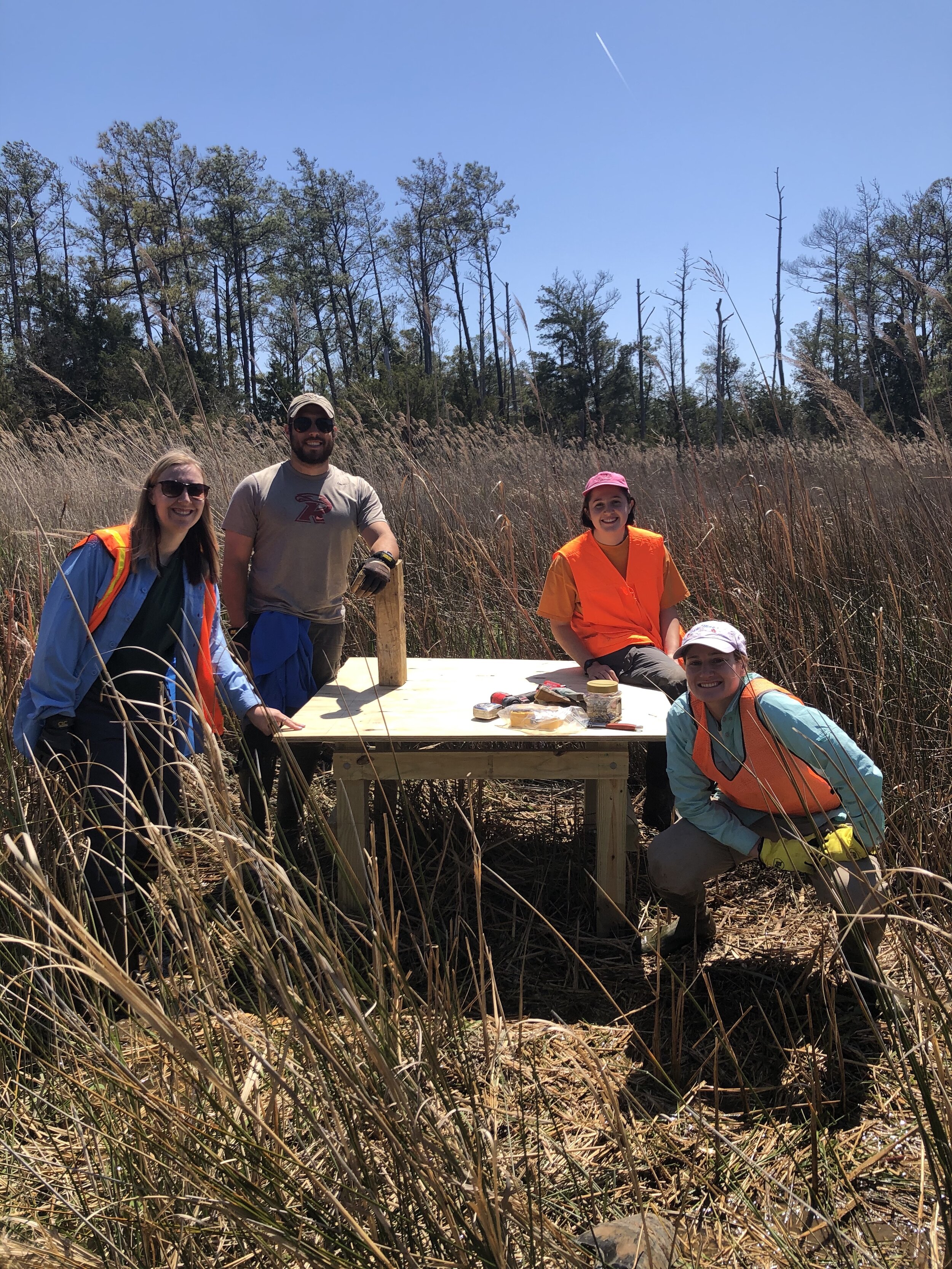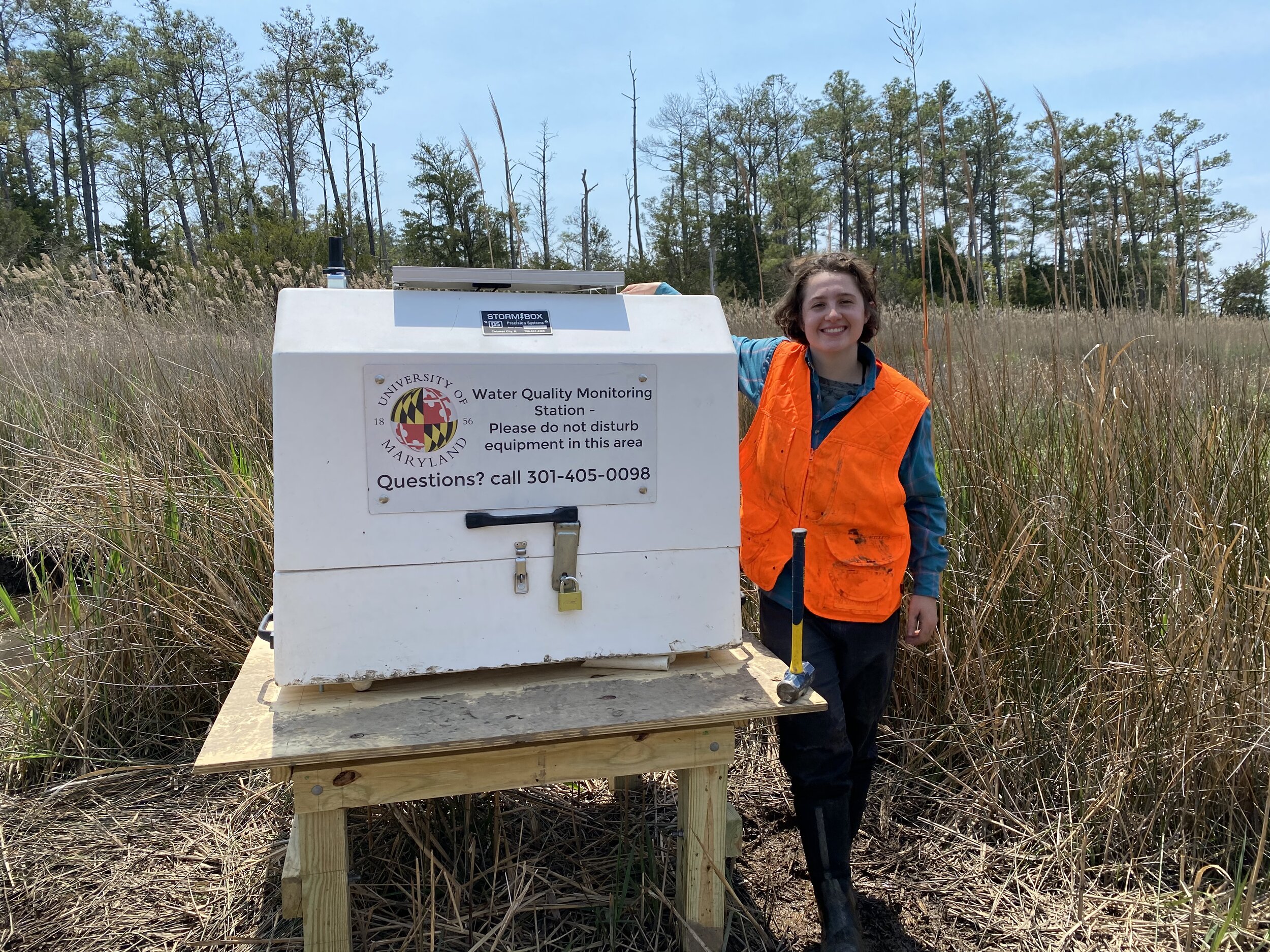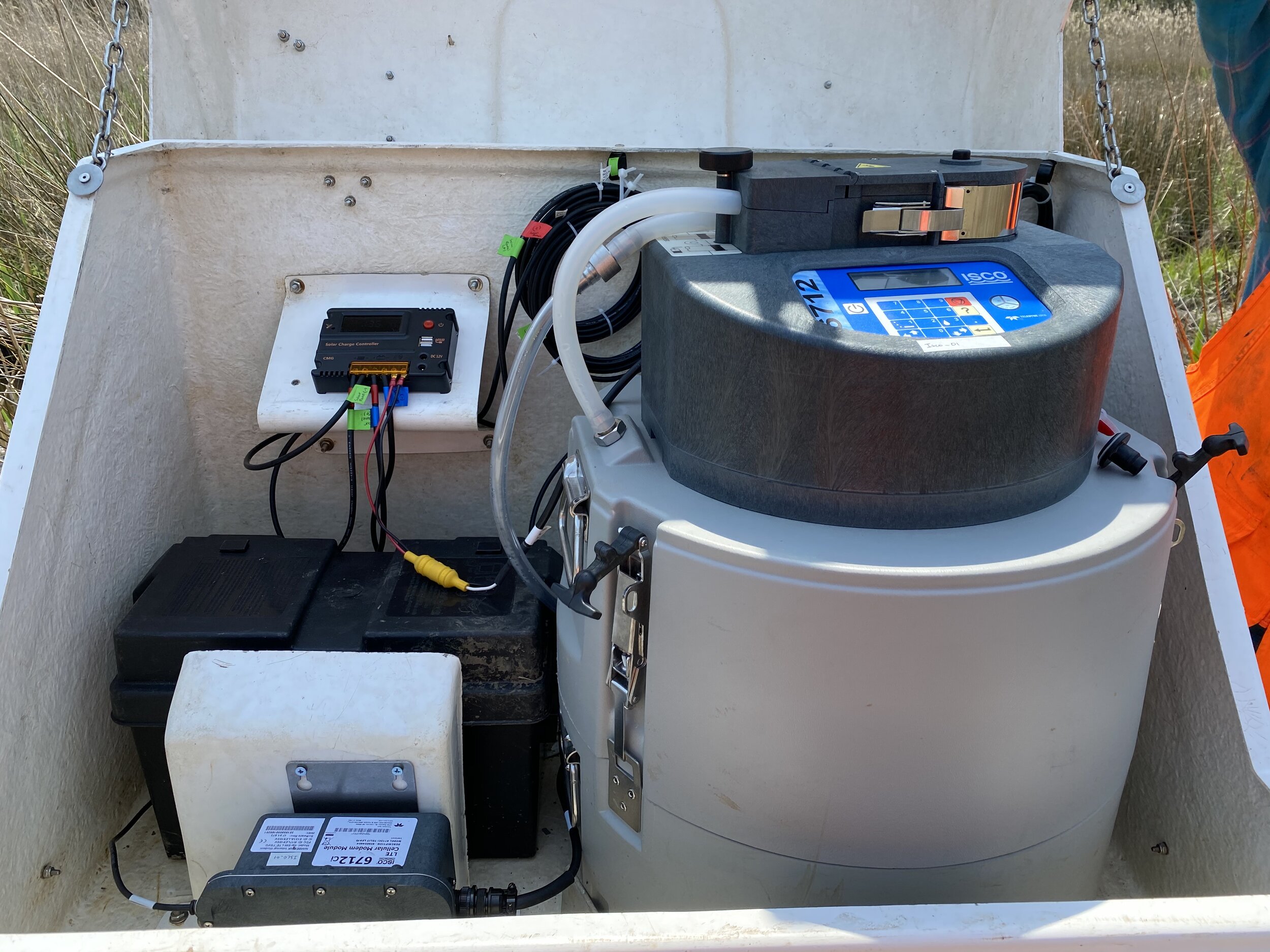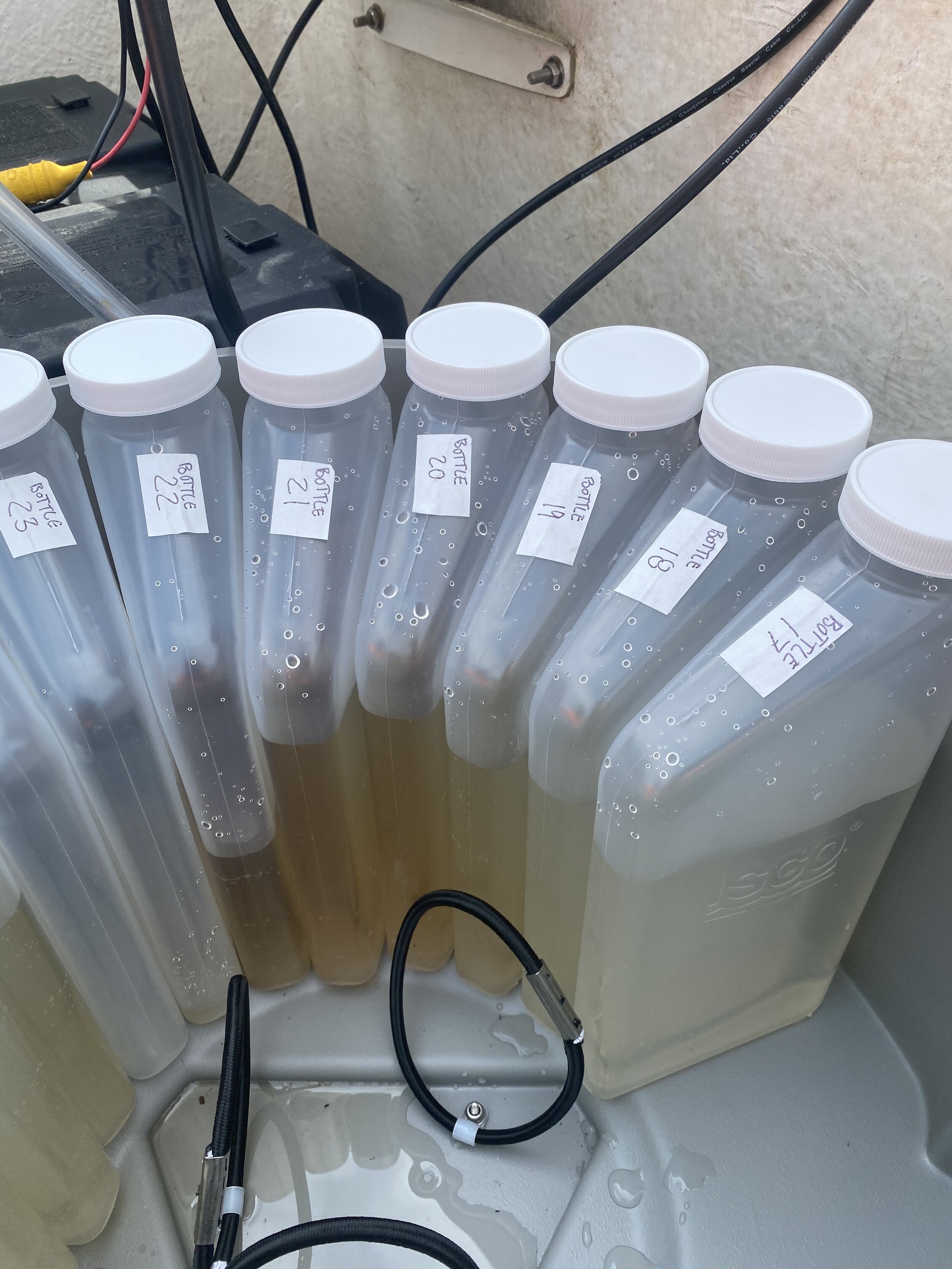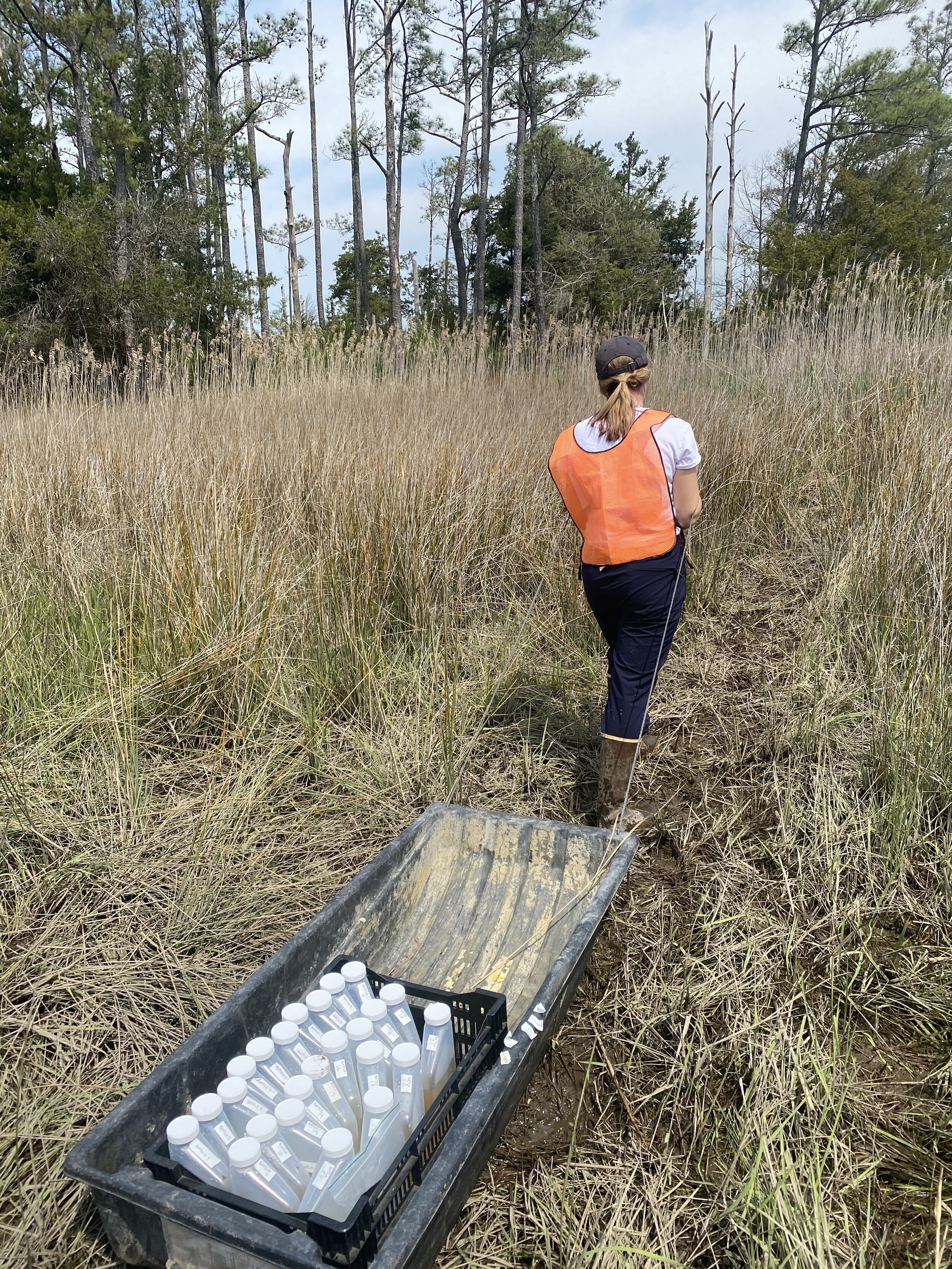Marsh madness!
Last week the Agroecolab installed the first automatic water sampler (ISCO) at the Monie Bay NERR site. We could not have done it without the help of some amazing students and techs from The University of Delaware and The Virginia Institute of Marine Science! As a group, we carried about 600 pounds of equipment and tools over a mile into the marsh!
This installation is the first of several in the Delmarva Peninsula as part of a National Science Foundation Coastal Critical Zone project. Sea-level rise is causing saltwater to move from coastal marshes and tidal creeks inland over forests and croplands. Tidal marshes are expanding into new areas because of the resulting salinization of soils and shallow groundwater, giving rise to “ghost forests” and affecting crops growing on the edges of farm fields. In response, we are studying sites located in Delaware, Maryland and Virginia by monitoring the hydrological, biogeochemical, ecological and geomorphological impacts of salinization at marsh-forest-agriculture boundaries.
The automatic water samplers will be deployed in a tidal creek at a saltwater intruded farm and forest in each state (6 total). Installing the sampler first requires us to build a perfectly level platform in some not-so-solid ground. Then, we attach a fiberglass “stormbox” to protect the instrumentation, a solar panel, and modem that allows us to text with our instrument from afar. Finally, we deploy the ISCO, which is equipped with a flow meter to measure the change is the speed and direction of water flow as well as a sampler to suck up water at predetermined times and intervals.
It was a huge undertaking getting our first water sampler installed, but it was oh-so-much fun with this amazing team who laughed each step of the way!


